Morocco’s rich cultural heritage uniquely blends African, Arab, and European influences, evident in its architecture, customs, and traditions. In this article, we’ll delve into the hidden cultural gems of Morocco, showcasing the country’s most distinctive treasures. Join us on this journey to discover the off-the-beaten-path destinations that reveal this North African country’s fascinating history and traditions.
Moroccan Architecture: A Window into the Country’s Rich Cultural History
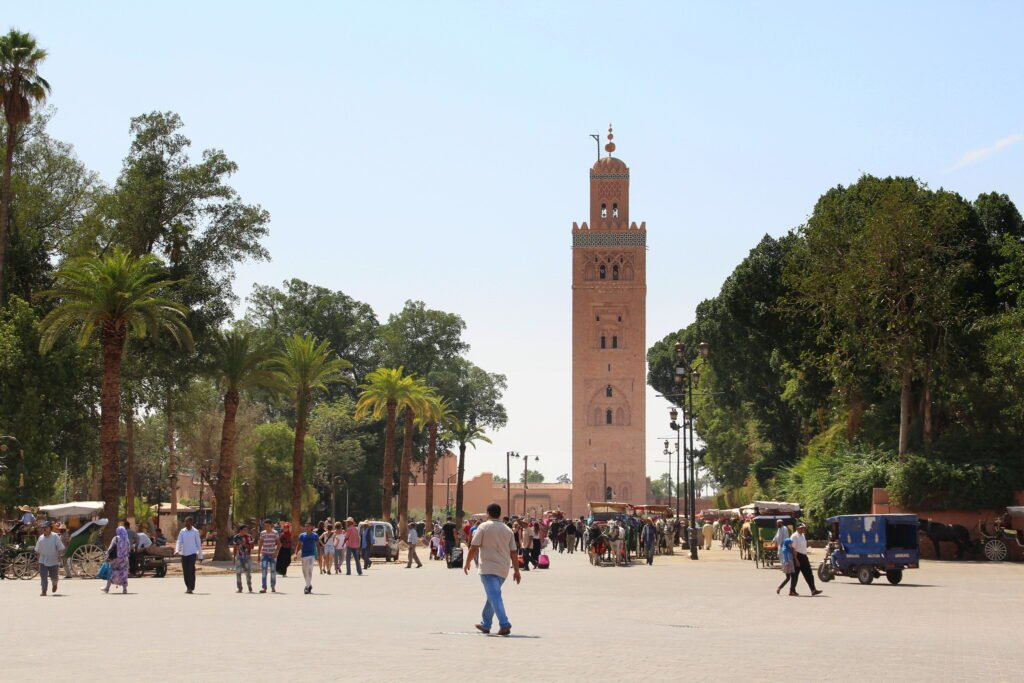
Morocco’s architecture is a striking representation of the country’s rich cultural heritage, influenced by Arab, Berber, and European cultures. The unique building styles showcase intricate geometric designs of traditional zellige tiles and ornate carvings of wooden doors, creating a feast for the eyes.
One of the most famous examples of Moroccan architecture is the Koutoubia Mosque in Marrakech. Built-in the 12th century, the mosque is adorned with intricate carvings and tilework. Its towering minaret, standing at 77 meters tall, represents the country’s Islamic heritage and showcases the skilled craftsmanship of Moroccan architects.
Another stunning example of Moroccan architecture is the Kasbah of the Udayas in Rabat. Built-in the 12th century, this stronghold sits on a hill overlooking the Bou Regreg River and the Atlantic Ocean. Its imposing walls and towers reflect the country’s military history, while its intricate tile work and gardens within the walls reflect its artistic and cultural achievements.
It’s worth noting that Moroccan architecture isn’t limited to historic buildings. Modern facilities also incorporate traditional design elements, as seen in the Hassan II Mosque in Casablanca. Completed in 1993, the mosque is one of the largest in the world, featuring traditional Moroccan design elements such as zellige tile work and ornate carvings while incorporating modern features like a retractable roof.
Visitors can get a fascinating glimpse into the country’s rich cultural history by exploring Morocco’s architecture. From admiring historical landmarks to strolling through modern cities, Moroccan architecture is a testament to the blend of Arab, Berber, and European influences, coupled with Moroccan architects’ skilled craftsmanship and artistic flair, resulting in a unique and immediately recognizable style.
Moroccan Crafts: Preserving Heritage Through Art
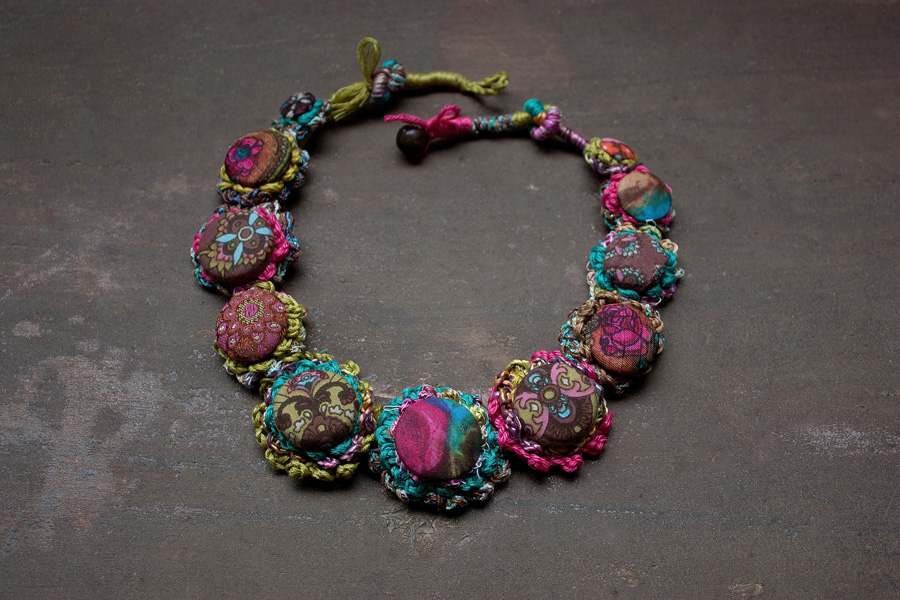
Morocco’s handicrafts offer visitors a colorful glimpse into the country’s rich cultural heritage. These crafts are handmade using traditional techniques passed down through generations. Moroccan handicrafts encompass a variety of items, such as pottery, textiles, metalwork, and leather goods, among others.
Moroccan pottery is an ancient craft still thriving today. Skilled potters use traditional techniques to create intricate designs on Tagines, plates, bowls, and vases. The pottery is often adorned with geometric patterns, flowers, and Arabic calligraphy, reflecting the country’s artistry and creativity.
In rural areas, women weave and embroider textiles using cotton, wool, and silk, creating unique carpets, blankets, and clothing designs adorned with beads, sequins, and tassels. Moroccan textiles are famous for their vibrant colors and intricate designs, showcasing the country’s textile traditions.
Moroccan metalwork is another widely practiced handicraft. Craft artisans create intricate designs and patterns that decorate doors, windows, furniture, and Moroccan lamps and lanterns using copper, silver, and brass.
Morocco is also famous for its high-quality leather goods. Using traditional techniques and natural dyes, artisans create bags, shoes, and belts that have earned a renowned reputation worldwide. The tanning process involves using water, poplar leaves, and pomegranate peel, resulting in a distinctive texture and color.
Morocco’s handicrafts are a testament to its creativity and artistry, allowing visitors to take a piece of its rich cultural heritage home. Supporting local artisans and purchasing traditional handicrafts is an excellent way to preserve Morocco’s ancient crafts for future generations. Understanding the history and techniques behind each art is also a great way to appreciate their beauty and significance.
Music and Dance in Moroccan Culture
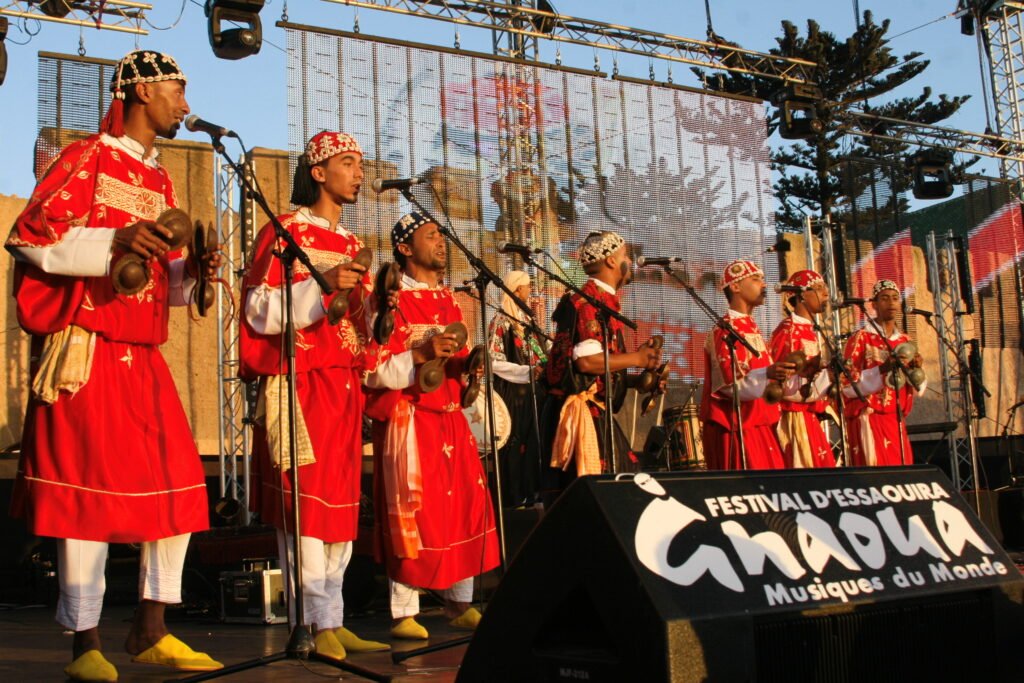
Music and dance are integral to Moroccan culture and traditions, reflecting the country’s rich heritage. Morocco’s music scene is diverse, vibrant, and dynamic, from traditional to contemporary, with influences from African and Islamic traditions. Traditional Moroccan music uses various instruments, including the oud, Iraq, and guembri. Meanwhile, the bendir, a large frame drum, is a common feature of traditional Moroccan dance performances.
One of the most renowned Moroccan dance forms is the Guedra, performed by women and characterized by circular movements, clapping, and chanting. Another popular dance style is the Ahwach, famous in the Atlas Mountains for its synchronized movements and chanting. The Chaabi dance, on the other hand, is a lively and energetic crowd-pleaser in urban areas. These dances celebrate Moroccan traditions and culture, passed down through generations.
Contemporary Moroccan music has been heavily influenced by Western hip-hop, pop, and rap styles. Saad Lamjarred, as an example, is a modern Moroccan artist who has gained popularity recently.
Morocco’s music and dance scene is a source of pride for the country and has gained international recognition. The Gnaoua World Music Festival in Essaouira is a significant event that draws artists and audiences from around the globe. The festival celebrates the fusion of traditional Gnaoua music with modern sounds, showcasing the diversity and creativity of Moroccan music.
Visitors to Morocco can experience the country’s rich music and dance heritage through live performances, festivals, and concerts. These cultural experiences offer a unique insight into Morocco’s traditions and identity, providing an unforgettable and immersive travel experience.
Moroccan Cuisine: A Cultural Delight
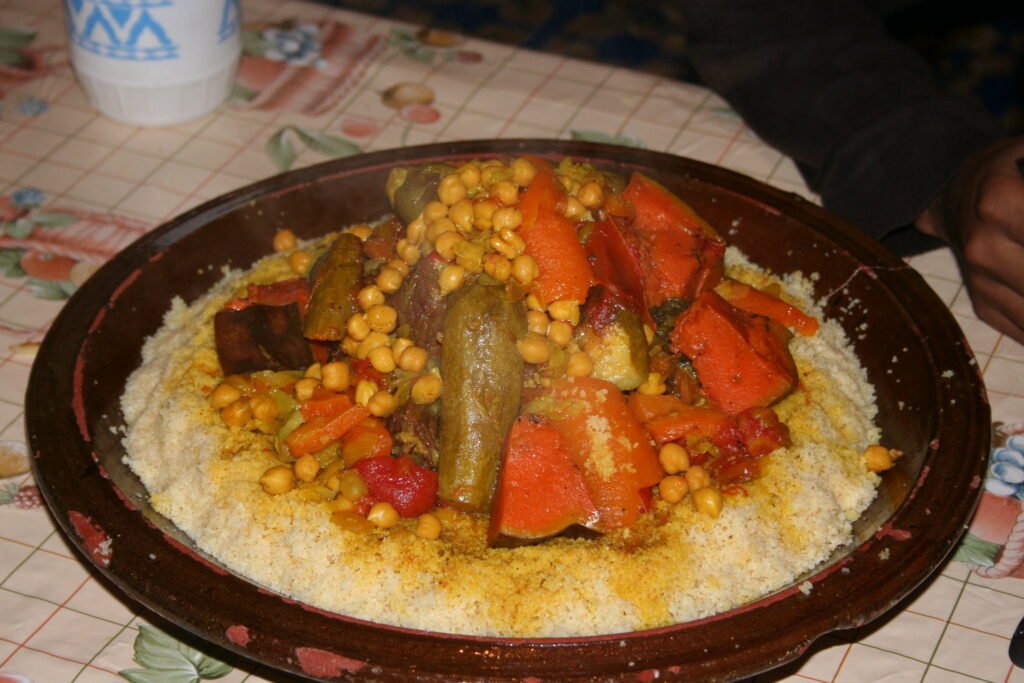
Moroccan cuisine is a cultural delight that reflects the country’s rich history and diverse culinary traditions. With unique combinations of spices, herbs, and ingredients, Moroccan dishes boast a bold and flavorful taste that appeals to everyone’s palate. Aromatic spices like cumin, ginger, paprika, and saffron are widely used in Moroccan cuisine, infusing dishes with a depth of flavor that is both exotic and comforting.
One of the most famous Moroccan dishes is the tagine, a slow-cooked stew that features meat or fish, vegetables, and a blend of spices. This savory dish is named after the earthenware pot in which it is cooked, giving it a distinct and authentic flavor. Another popular dish is couscous, made of steamed semolina granules and typically served with vegetables, meat, or fish. Moroccan cuisine also features savory pastries like pastilla, filled with meat and spices, and sweet pastries such as baklava and shebakia, deep-fried dough coated in honey and sesame seeds.
Moroccan cuisine blends Arab, Berber, and Mediterranean influences, making it a unique and unforgettable culinary experience. Preserved lemons add tanginess to many dishes, while harissa, a spicy red pepper paste, is a common seasoning and condiment. To complement their meals, Moroccans often enjoy sweet mint tea, a refreshing and popular beverage served with sweet pastries or after meals as a digestive.
Travelers to Morocco should not miss the chance to experience the country’s diverse culinary traditions. With its flavorful and aromatic dishes, Moroccan cuisine is a true cultural delight that is an integral part of Morocco’s traditions and heritage.
Moroccan Heritage: Traditions and Festivals
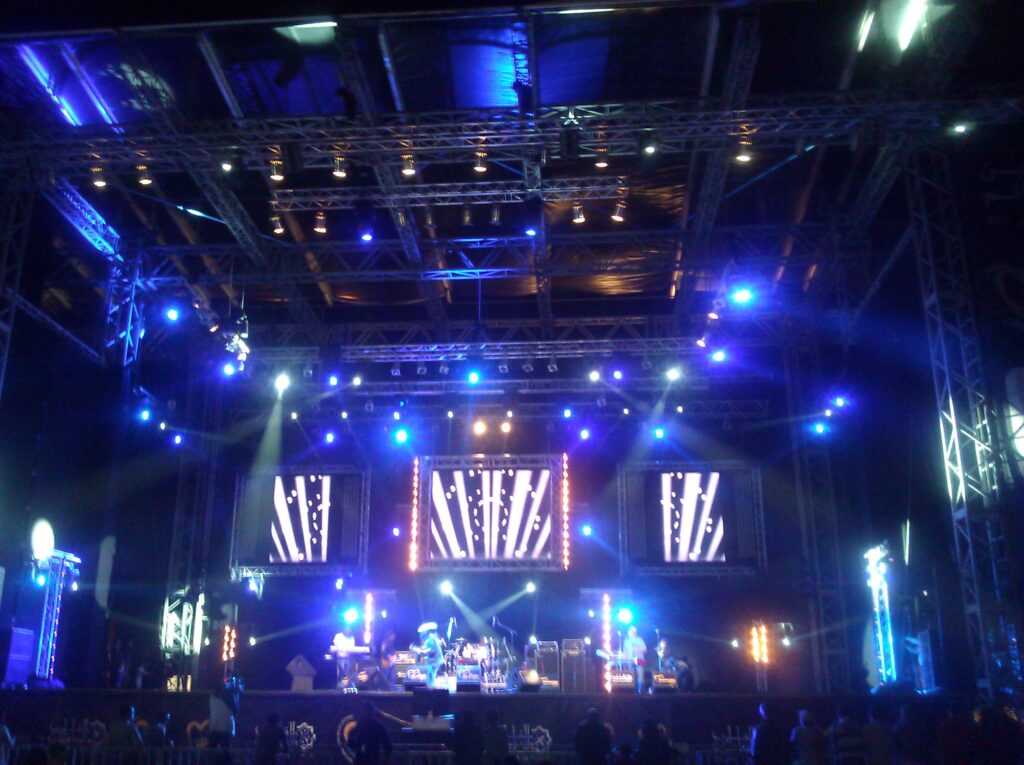
Morocco is a country with a vibrant cultural heritage. Its traditions and festivals reflect the country’s diversity and provide a glimpse into Moroccan life. Many of these customs have been passed down from generation to generation and remain integral to Moroccan society. We’ll explore famous Moroccan traditions and festivals showcasing the country’s unique heritage.
Eid al-Fitr and Eid al-Adha are two significant celebrations in Morocco that hold a special place in the hearts of its people. Eid al-Fitr marks the end of Ramadan, the holy month of fasting, and is a time for families to come together, exchange gifts, and enjoy traditional Moroccan cuisine. On the other hand, Eid al-Adha honors Prophet Ibrahim’s obedience to God by sacrificing his son, Ismail. This festival allows Moroccans to give back to their communities and share their blessings with those in need.
The Mawazine Music Festival is one of Morocco’s most popular festivals and attracts local and international musicians. This festival showcases the diversity of Moroccan music and culture and celebrates music in all its forms. The festival takes place in the capital city of Rabat and is a must-visit for music lovers worldwide.
Another festival that celebrates Moroccan heritage is the Fes Festival of World Sacred Music. This festival celebrates the world’s spiritual traditions through music and art and features performances by artists worldwide. The festival takes place in the historic city of Fes, known for its rich Islamic architecture and cultural heritage.
The annual Rose Festival in Kelaat M’gouna celebrates the harvest of roses in the region. This festival is a feast for the senses, with its colorful parades, traditional music, and dances. Visitors can also enjoy the local cuisine, and purchase rose products, including rose water and perfumes.
Finally, the Marrakech International Film Festival celebrates cinema, bringing together filmmakers and cinema enthusiasts worldwide. This festival allows Moroccans to showcase their hospitality and love for the arts while promoting the country’s film industry.
Conclusion
With its rich cultural heritage, Morocco offers visitors a unique experience that blends African, European, and Arab influences. From its stunning architecture to its vibrant music and delicious cuisine, there is something for everyone to discover in this country. Whether you are interested in history, art, or just experiencing new cultures, Morocco is a destination that should not be overlooked. It is a must-visit location for anyone’s travel bucket list. Don’t miss the opportunity to explore this fascinating country and all it offers.
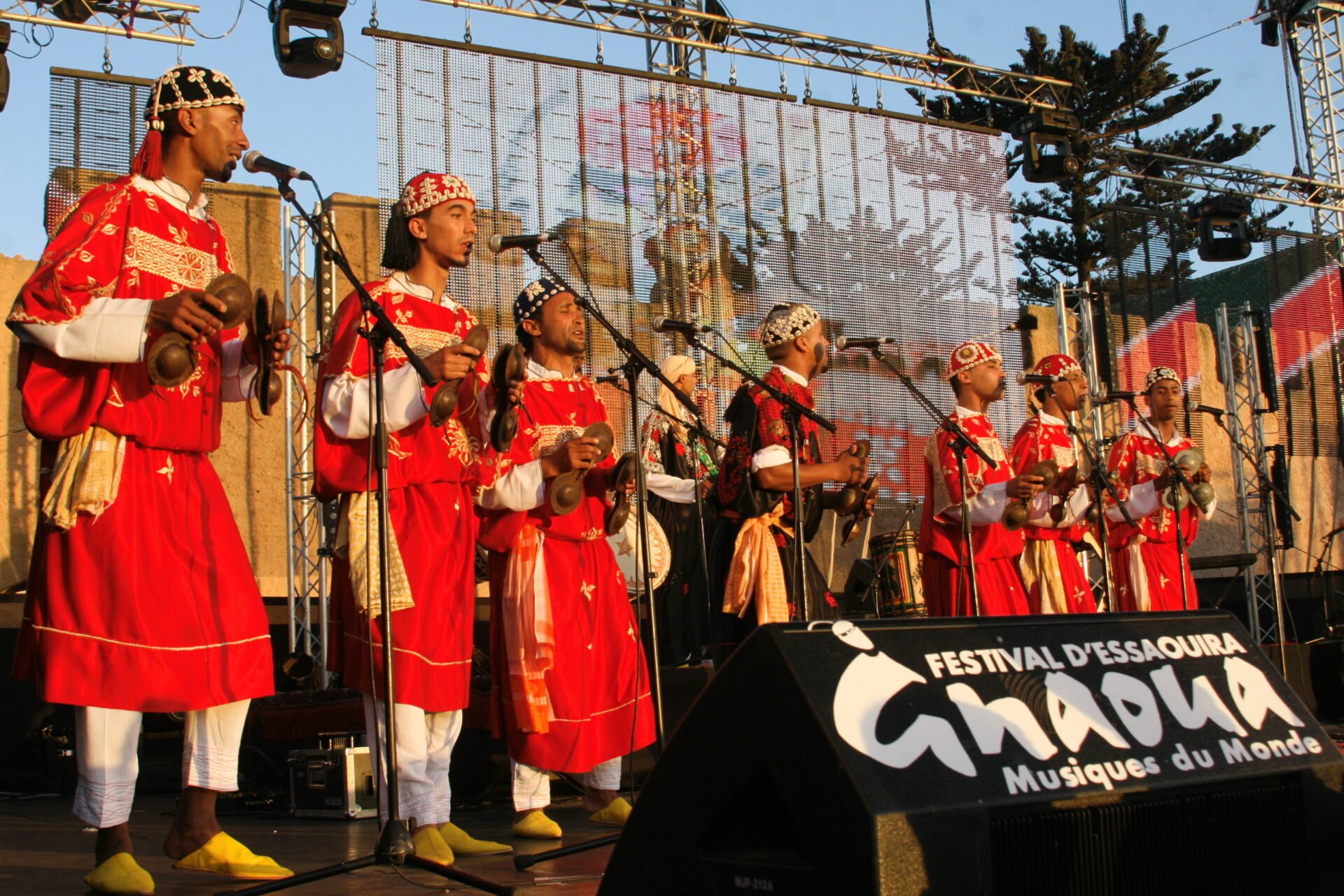
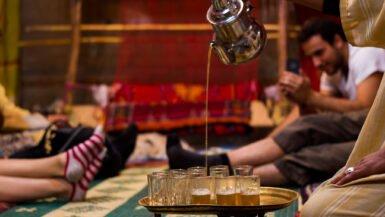
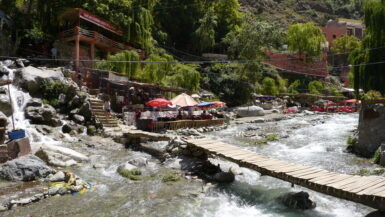
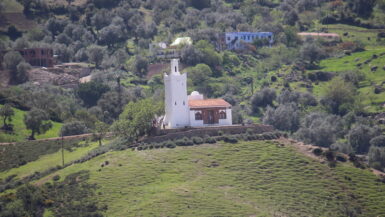
Leave a reply